Occupational Safety Training for Crude Oil Extraction
99,000 ₫
Note: The price above is calculated per person. Prices may vary depending on the number of trainees participating in the course and market fluctuations. For more accurate pricing support, please refer to the quotation or contact our consultant directly.
Occupational safety is an important issue in crude oil extraction factories and needs to be addressed promptly to ensure the health and safety of workers, and enhance the reputation of businesses. The occupational safety training course is one of the effective solutions to raise awareness on how to prevent workplace accidents for workers involved in crude oil extraction.
Table of Contents
Toggle1. Overview of Crude Oil
a. What is crude oil?
- Crude oil (also known as petroleum) is a type of natural resource found underground and extracted to be processed into many different products, mainly gasoline, diesel, grease, lubricating oil, and lubricants. Crude oil is formed from the fossils of ancient organisms and other organic matter buried in the ground millions of years ago. It is the basic raw material for the petroleum industry, playing a vital role in the global economy.
- According to statistics, Vietnam’s crude oil output in 2021 was about 10 million tons and is expected to grow strongly in the following years. Crude oil exploitation sites in Vietnam are mainly concentrated in the Southern seas, especially the Eastern seas.
- However, the crude oil exploitation industry in Vietnam still faces many difficulties such as poor infrastructure, substandard exploitation technology, high investment costs, environmental pollution, and other risks such as accidents and environmental disasters.

b. Types of crude oil exploitation machinery
Common types of crude oil exploitation machinery include:
- Oil drilling rig: this is a type of specialized machine used to drill and retrieve crude oil samples from wells. Oil drilling rigs come in many different sizes and capacities, depending on the depth and difficulty of exploitation of the well.
- Offshore oil exploitation equipment: this equipment is used for offshore oil exploitation. They include floating drilling rigs, oil tankers, and other equipment.
- Oil processing equipment: this equipment is used to process crude oil after it has been extracted. They include oil filters, pipelines, and other equipment to separate the components of the oil such as gas, water, and impurities.
- Oil transport vehicles: these vehicles are used to transport oil from exploitation areas to storage and processing facilities, including oil tankers, pipelines, and oil trucks.
- Measurement and control equipment: this equipment is used to measure the amount of crude oil being exploited and control exploitation parameters such as pressure, temperature, and flow rate. They include sensors, controllers, and other equipment.

c. Typical crude oil exploitation companies in Vietnam
Currently, Vietnam has a number of typical crude oil exploitation companies such as:
- Vietnam Oil and Gas Corporation (PetroVietnam)
- Vietnam National Oil and Gas Group (PVN)
- PetroVietnam Exploration Production Corporation (PVEP)
- Hung Hoa Oil and Gas Exploitation and Manufacturing Joint Stock Company (HHGP)
- PetroVietnam Technical Services Corporation (PVC-PT)
- PetroVietnam Exploration and Production Corporation (PVE)
- PetroVietnam Drilling and Well Services Corporation (PVD).
All of these companies are leading units in the field of crude oil exploitation in Vietnam.
d. Specific jobs in a crude oil exploitation factory
Group 1
- CEO, Deputy CEO, department head in a crude oil exploitation factory.
Group 2
- Safety officer: manages safety in the factory, designs safety procedures, supervises and urges employees to comply with safe working procedures.
Group 3
- Geological exploration: Geologists must conduct geological exploration to find the best location for crude oil exploitation. They use measurement devices to collect data and make conclusions about the geological structure.
- Exploitation: Once an exploitation location has been found, petroleum engineers will proceed with drilling and evaluating the rock layers to ensure the most effective oil exploitation. Exploitation employees will be brought in to carry out the oil exploitation work.
- Oil processing: Crude oil from the field is brought to a processing factory to separate oil and gas from impurities and other pollutants. These jobs include wastewater treatment, impurity and gas separation, and exhaust gas treatment.
- Transportation: After the oil is separated from impurities, it is transferred to refineries to produce oil and gas products. This transportation process can be done by oil trucks or pipelines.
- Maintenance: Maintenance employees must ensure the continuous and effective operation of the oil exploitation factory. They often perform tasks such as repairing equipment, inspecting pipelines, and checking resources and safety systems.
- Management: Management employees are trained to manage the operation of the oil exploitation factory. Their job includes managing employees, making decisions related to manufacturing operations, and ensuring compliance with occupational safety and environmental protection regulations.
Group 4
- Office work, service, sales, marketing.
- Manufacturing management, quality management, human resource management, material management, financial accounting management.
- Research and development of new products, designing product packaging.

2. Overview of the occupational safety training course for crude oil exploitation
In this article, we focus on issues related to group 3, because group 3 is the group that directly participates in the manufacturing process and bears the highest risk of occupational safety. See more about other groups here
a. What is occupational safety training for group 3?
- Occupational safety training for group 3 consists of sessions that equip employees with awareness of how to prevent occupational accidents.
- The occupational safety training course will help employees recognize and prevent dangers, and limit the risks of occupational accidents occurring during work.
b. Training time
Initial occupational safety training time
- The total training time is at least 24 hours, including examination time.
- 8 hours of theoretical study on the system of policies and laws on occupational safety and hygiene
- 8 hours of theoretical study on basic knowledge of occupational safety and hygiene
- 4 hours of theoretical study on specialized training content
- 2 hours of practical training on specialized training content
- 2 hours of theoretical examination at the end of the training course
The safety training center will allocate the time into multiple training sessions depending on the time arrangement for the employees. However, there will usually be 6 training sessions, and the course will last for 3 days, provided that the manufacturing business can arrange continuous study time.
Periodic occupational safety training time
- Before the occupational safety card expires, if an employee wants to have it re-issued, they must undergo a periodic occupational safety training course, with the periodic safety training time being at least 50% of the initial safety training time.
Explanation: The total periodic occupational safety training time is at least 12 hours, including examination time. After completing the periodic training course and passing the examination, the employee will be re-issued, or have their occupational safety card renewed.
c. Content of the training course
| No. | TRAINING CONTENT | TRAINING TIME (HOURS) | |||
| Total | Of which | ||||
| Theory | Practice | Examination | |||
| I | System of policies and laws on occupational safety and hygiene | 8 | 8 | 0 | 0 |
| 1 | Overview of the system of legal normative documents on occupational safety and hygiene. | 6 | 6 | ||
| 2 | System of technical standards and regulations on occupational safety and hygiene. | 1 | 1 | ||
| 3 | Specific regulations of state management agencies on occupational safety and hygiene when newly constructing, expanding, or renovating works, facilities for manufacturing, using, preserving, storing, and inspecting machinery, equipment, materials, and substances with strict requirements on occupational safety and hygiene. | 1 | 1 | ||
| II | Basic knowledge of occupational safety and hygiene | 8 | 8 | 0 | 0 |
| 1 | Basic knowledge of dangerous and harmful factors in the workplace. | 4 | 4 | ||
| 2 | Methods to improve working conditions. | 1 | 1 | ||
| 3 | Safety culture in manufacturing and business. | 1 | 1 | ||
| 4 | Rights and obligations of employers and employees; policies and regimes on occupational safety and hygiene for employees; functions and duties of the safety and hygiene network. | 1 | 1 | ||
| 5 | Occupational safety and hygiene regulations, signs, safety and hygiene signs, and the use of safety equipment, personal protective equipment; professional skills, first aid for occupational accidents, and prevention of occupational diseases. | 1 | 1 | ||
| III | Specialized training content | 6 | 4 | 2 | 0 |
| General knowledge about types of machinery, equipment, and substances that generate dangerous and harmful factors; analysis, assessment, and management of occupational safety and hygiene risks, safe working procedures with machinery, equipment, and substances with strict requirements on occupational safety and hygiene. | 6 | 4 | 2 | ||
| IV | Safety training examination at the end of the training course | 2 | 2 | 0 | 0 |
| Total | 24 | 22 | 2 | ||
See more training content of 6 groups
d. Occupational safety card
After completing the occupational safety training course and passing the examination, the employee will be issued an occupational safety card (in practice, it is often called the occupational safety certificate for group 3).
The group 3 safety card will clearly show information such as: full name, date of birth, job, and specific working environment. It also has the training time, red seal, and signature confirming the completion of the training course.
According to the regulations on issuing safety cards specified in Clause 2, Article 24 of Decree 44/2016/ND-CP, it is divided into 2 cases:
- In the case where the employer and the employee have a labor contract with each other, the employer must sign, seal, and interleaf the safety card for the trained person in group 3 after they have gone through the training course from the occupational safety training unit and passed the examination.
- In the case of self-employed or seasonal workers, who do not have a labor contract, the training unit must sign, seal, and interleaf the safety card for the employee after they have gone through the training course from the occupational safety training unit and passed the examination.

3. Recognizing dangers affecting employees when exploiting crude oil
Crude oil exploitation is a job with many potential dangers that affect the health and lives of employees. Here are some common dangers:
- During exploitation, accidents such as falls, collisions with machinery, vision damage, poisoning, crushing, burns, blood loss, respiratory diseases, intestinal problems, and other issues can occur.
- During exploitation, employees can be exposed to toxic chemicals such as benzene, toluene, hexane, xylene, phthalates, fluoride compounds, and other toxic substances. Exposure to these chemicals can cause health problems such as respiratory inflammation, cancer, kidney disease, and other diseases.
- The crude oil exploitation process requires the use of specialized equipment and flammable substances, which can cause explosions and fires.
- During the operation and maintenance of electrical equipment, employees can face the risk of electric shock, which affects their lives and health.
- During crude oil exploitation, smoke, dust, and small particles can be generated, which affect the respiratory system, eyes, and skin of employees.
4. Common types of occupational accidents when exploiting crude oil
Common types of occupational accidents when exploiting crude oil include:
- Occupational accidents due to lack of safety with equipment and machinery: During crude oil exploitation, the equipment and machinery used such as cranes, forklifts, drilling equipment, transport, installation, fixing… can cause occupational accidents if not used correctly or not maintained properly.
- Occupational accidents due to fire and explosion: During crude oil exploitation, a large amount of toxic gas and other abnormal substances are generated, which can cause explosions or fires if not handled properly. In addition, crude oil is also a flammable and explosive substance, so if not managed and used correctly, it can lead to serious accidents such as fires and explosions, causing damage to property and the lives of employees.
- Occupational accidents due to toxins: Crude oil exploitation activities can cause harmful substances such as toxic gas, dust, oil vapor… that threaten the health of employees. If not wearing protective gear correctly or not trained in occupational safety, employees can be exposed to toxic substances and cause related diseases.
- Occupational accidents due to unsafe working environment: Crude oil exploitation activities can cause negative impacts on the environment such as earthquakes, landslides, oil spills, environmental pollution… All of the above risks can cause occupational accidents related to an unsafe working environment for employees.
5. Safety measures when participating in crude oil exploitation
Safety measures when participating in crude oil exploitation include:
- Employees must be fully equipped with protective clothing such as armor, hard hats, safety glasses, gloves, and safety shoes.
- Controlling flammable materials such as gasoline, diesel, and gas is very important in minimizing the risk of fire and explosion. Workers need to be trained on how to use, store, and transport these materials safely.
- Crude oil exploitation equipment needs to be checked and maintained periodically to ensure they operate correctly and do not cause accidents.
- The use of safe tools and vehicles such as machinery with sensors, alarm systems, and automatic power cut-off mechanisms helps minimize the risk of accidents during exploitation.
- Employees need to be trained in occupational safety on safety procedures and measures while working at crude oil exploitation facilities. They need to understand the risks and dangers of the job and how to minimize them.
- Crude oil exploitation facilities need to comply with the safety regulations of the government and related organizations to ensure the safety of employees and the environment.
- To minimize the impact of crude oil exploitation on the environment, exploitation facilities need to use environmental protection measures such as wastewater treatment systems and proper waste management.
- Periodically organize occupational environment monitoring in factories and enterprises, collect and analyze harmful factors to employees, thereby adjusting to reduce the level of harm to prevent occupational diseases for them.

6. Benefits of occupational safety training for crude oil exploitation
An Toan Nam Viet provides businesses with great benefits after completing occupational safety training courses according to the regulations in Decree 44/2016/ND-CP on occupational safety and hygiene, for companies, factories, and businesses.
- Employees can recognize the potential risks of occupational accidents, from which they can take preventive measures to avoid occupational accidents.
- Businesses can establish risk prevention measures in the manufacturing, operation, and maintenance processes.
- Reduce costs when there is a risk of safety loss in labor.
- Uninterrupted manufacturing will help increase labor productivity and product quality.
- Comply with occupational safety law regulations, avoiding legal risks.
- Create prestige and professionalism in all aspects, thereby raising the brand for your business.
The training courses of Nam Viet are the solution to prevent and combat external factors affecting each individual so that they can avoid dangers that can lead to injury or, more seriously, death.
7. Customer feedback after completing the occupational safety training course for crude oil exploitation
An Toan Nam Viet has many years of experience in the mission of accompanying many businesses in Vietnam in general and in the southern provinces in particular. And that responsibility is something very precious to Nam Viet, which is why Nam Viet’s Occupational Safety Training is always focused on becoming more and more professional. And the motivation for An Toan Nam Viet to grow strong to date comes from the positive feedback and suggestions from businesses. Below are the feedback from our partners that we have served.
Bac Nam E&C Investment Construction Joint Stock Company
“The first time I used the service at An Toan Nam Viet, I was very surprised by the enthusiastic 24/7 support of the consulting team. The class organization was very quick and convenient for our company, thank you very much for Nam Viet’s service!”
Hoa Dat Construction and Trading Joint Stock Company
“Nam Viet’s service has helped us a lot in simplifying occupational safety and the work of completing safety records for our work process. The consulting team is enthusiastic and timely in addressing our questions. 5 stars for Nam Viet”
See more other feedback from customers of An Toan Nam Viet
8. An Toan Nam Viet’s Occupational Safety Training Capacity
An Toan Nam Viet is a reputable and quality occupational safety training center in Vietnam today. With continuous occupational safety training sessions taking place at manufacturing workshops, factories or construction sites across the country (63 provinces and cities in Vietnam).
Occupational safety training license
- An Toan Nam Viet has been inspected and certified by the The Safety Department of the Ministry of Labor – Invalids and Social Affairs as being qualified to conduct occupational safety and hygiene training. This further strengthens our capacity for occupational safety training activities.

Materials and lectures
- Before the occupational safety training materials are put into the occupational safety training courses, they have been reviewed and approved to ensure that the lectures are always correct in terms of knowledge and effective when applied.
- The teaching method of our lecturers is synchronized with the teaching standards of An Toan Nam Viet, which is a method that experts in occupational safety and hygiene training have researched and drawn from the teaching process to bring the highest knowledge acquisition efficiency to students.
Facilities
- Controlling the factors in the classroom that affect the training process will increase teaching performance and the effectiveness of students’ knowledge acquisition.
- Our facilities supporting the training course always arrange spacious classrooms that meet standards for area, lighting, training equipment, etc.
9. Nationwide reputable and quality safety training center
At An Toan Nam Viet, we always prioritize our professional dedication to occupational safety training. For us, imparting the knowledge of self-protection to workers so they can have a safe foundation on their path to making a living is contributing to building the country.
To ensure effective training, we prepare carefully and meticulously every little detail, even the smallest. From preparing tools, equipment, teaching devices to curricula, materials, sound, and lighting.
Our occupational safety training lecturers are experts with many years of experience in the field. They even have research projects to identify risks in all occupations and how to prevent them.
The lecturers’ lectures are drawn from practice and conveyed in a vivid and easy-to-imagine way to the employees. These factors help employees feel comfortable during the learning time and acquire our taught knowledge well. Of course, the knowledge conveyed always closely follows Decree 44/2016/ND-CP.
From there, they grasp many measures to prevent dangers and how to protect themselves. At the same time, they also apply it in the most appropriate way in real work.
Our safety training center is proud to be a reputable and professional provider of occupational safety training services with the following advantages:
- Competitive training costs but training quality is still guaranteed.
- Flexible training schedule with the manufacturing situation of the company.
- Occupational safety training certification procedures are fast and comply with legal regulations.
- Training lecturers are people with many years of experience in the profession.
- The classroom controls factors affecting the training process to increase teaching performance and the effectiveness of students’ knowledge acquisition.
- The lectures are compiled to be suitable for occupational safety work in businesses.
- An Toan Nam Viet works with dedication and professionalism to support customers accurately and quickly.

10. See more training documents for crude oil exploitation
- Occupational safety documents for crude oil exploitation
- Set of occupational safety training documents
- Set of occupational safety training test questions
- Multiple-choice occupational safety test for crude oil exploitation
- Slides of the occupational safety training lecture for crude oil exploitation
1 review for Occupational Safety Training for Crude Oil Extraction
No comments yet

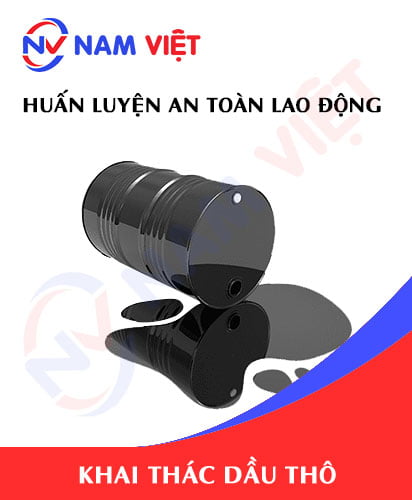
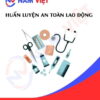
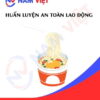



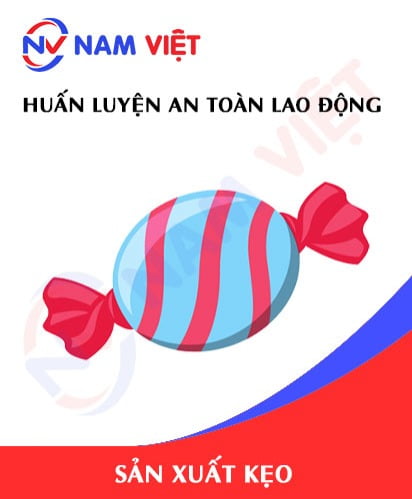




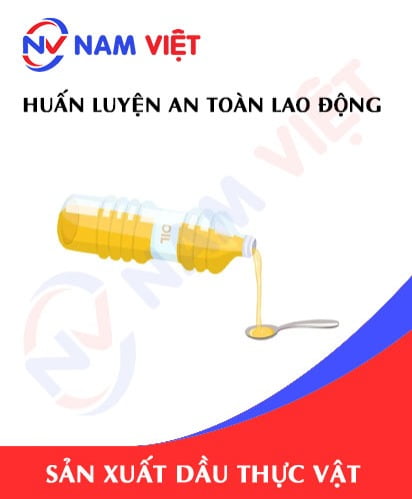


caotiensyhung.07081999
Dịch vụ huấn luyện an toàn lao động rất tốt nhé, giảng viên dạy rất sinh động dễ hiểu!